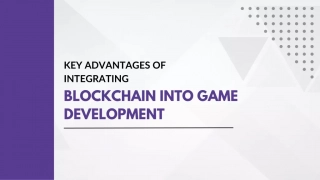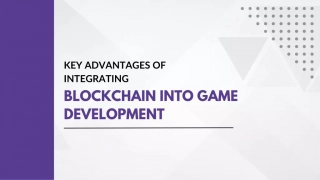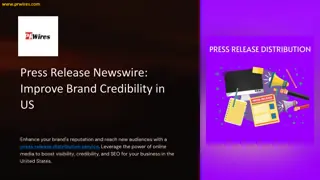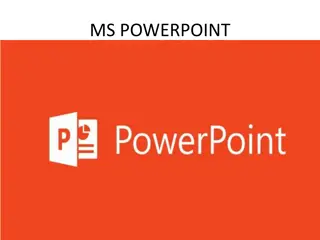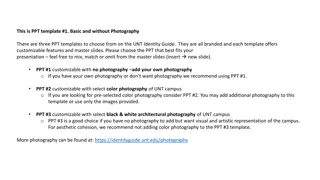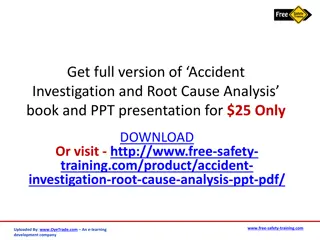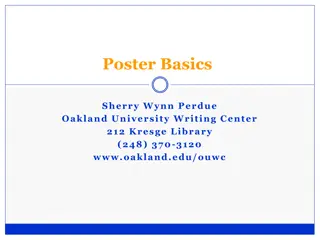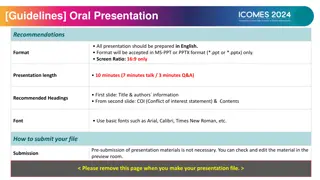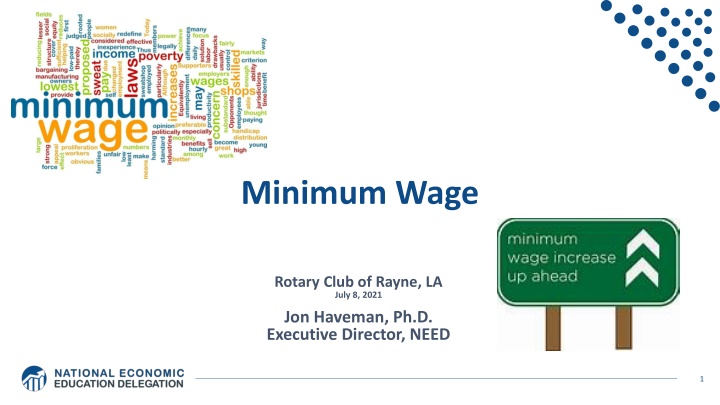
Understanding Minimum Wage Economics and Policies
Explore the intricacies of minimum wage, its historical background, effects of increasing it, and various perspectives from economists. Learn more about the National Economic Education Delegation and their efforts to promote economic understanding in policy discussions.
Download Presentation

Please find below an Image/Link to download the presentation.
The content on the website is provided AS IS for your information and personal use only. It may not be sold, licensed, or shared on other websites without obtaining consent from the author. If you encounter any issues during the download, it is possible that the publisher has removed the file from their server.
You are allowed to download the files provided on this website for personal or commercial use, subject to the condition that they are used lawfully. All files are the property of their respective owners.
The content on the website is provided AS IS for your information and personal use only. It may not be sold, licensed, or shared on other websites without obtaining consent from the author.
E N D
Presentation Transcript
Minimum Wage Rotary Club of Rayne, LA July 8, 2021 Jon Haveman, Ph.D. Executive Director, NEED 1
National Economic Education Delegation Vision - One day, the public discussion of policy issues will be grounded in an accurate perception of the underlying economic principles and data. Mission - NEED unites the skills and knowledge of a vast network of professional economists to promote understanding of the economics of policy issues in the United States. NEED Presentations - Are nonpartisan and intended to reflect the consensus of the economics profession. 2
Who Are We? Honorary Board: 54 members - 2 Fed Chairs: Janet Yellen, Ben Bernanke - 6 Chairs Council of Economic Advisers o Furman (D), Rosen (R), Bernanke (R), Yellen (D), Tyson (D), Goolsbee (D) - 3 Nobel Prize Winners o Akerlof, Smith, Maskin Delegates: 590+ members - At all levels of academia and some in government service - All have a Ph.D. in economics - Crowdsource slide decks - Give presentations Global Partners: 44 Ph.D. Economists - Aid in slide deck development 3
Available NEED Topics Include: Coronavirus Economics Immigration Economics US Economy Housing Policy Climate Change Federal Budgets Economic Inequality Federal Debt Economic Mobility Black-White Wealth Gap Trade and Globalization Autonomous Vehicles Minimum Wage US Social Policy 4
Credits and Disclaimer This slide deck was authored by: - Jon Haveman, NEED Disclaimer - NEED presentations are designed to be nonpartisan. - It is, however, inevitable that the presenter will be asked for and will provide their own views. - Such views are those of the presenter and not necessarily those of the National Economic Education Delegation (NEED). 5
Outline What is the minimum wage? Origin story Effects of increasing Economist s perspective Big (Unanswered) Questions 6
What Is The Minimum Wage? The minimum wage sets a wage floor. - It is unlawful for businesses in covered industries to pay a wage below the minimum. The Federal minimum wage is currently $7.25. - This is the highest that it has ever been. - Adjusting for inflation: o It is no higher than it was in the late 1950s. o It is nearly $5.00 lower than it was in the late 1960s. 7
Important Questions: What is the purpose of a minimum wage? Why do we have one? What are the implications of having one? Should we have one? How high should it be? 8
Minimum Wage: Purpose International Labor Organization: - The purpose of minimum wages is to protect workers against unduly low pay. They help ensure a just and equitable share of the fruits of progress to all, and a minimum living wage to all who are employed and in need of such protection. - Minimum wages can also be one element of a policy to overcome poverty and reduce inequality, including those between men and women, by promoting the right to equal remuneration for work of equal value. 9
Fair Labor Standards Act of 1938 Minimum wage: $0.25 raised 22 times Covered only about 23% of workers at the time. - The law did not apply universally. - 11 million out of 48 million gainful workers were covered. - The provisions of the Act affect employees who are engaged in (interstate) commerce or the production of goods for (interstate) commerce. - Not covered were: o Farm labor, retail trade, domestic and personal service, governmental service, or the self-employed. 10 Source: Daugherty, The Economic Coverage of the Fair Labor Standards Act
Common View of Minimum Wage Wages go up. Labor costs go up. Employment falls. Bottom line: are the increased wages worth the drop in employment? This is a very SIMPLE view of the minimum wage. - Economics is complicated. 13
Simple Views are Incomplete A minimum wage need not reduce employment. An increase in the minimum wage can hurt its intended beneficiaries - even with no employment effect. This incompleteness comes from potential firm responses: - Output prices - Nonwage compensation - Other job attributes: o Effort requirements, safety measures, quality of working environment. Because business settings vary, the responses across these areas will differ across industries and between firms within an industry. - No single answer is possible. 14
Arguments FOR a Minimum Wage Basic: - It raises the standard of living for minimum wage workers. o In 2019, CBO projected increases for 17 million people with an increase to $15/hour by 2025. Secondary - Less consensus: - Improved employee morale. o Less turnover, greater productivity. - Economic growth potential. o Increased purchasing power among low wage workers may increase aggregate demand. - Reduce gender disparities in wages. o A greater proportion of female workers are paid the minimum wage. o Proportions across race and ethnicity do not differ significantly. 15 Source: https://www.investopedia.com/articles/markets-economy/090516/what-are-pros-and-cons-raising-minimum-wage.asp
Arguments AGAINST a Minimum Wage Hike Basic: - Increased labor costs lowers employment among low wage workers. o Particular effect on: Small businesses. Labor intensive industries. Secondary: - Increases the cost of living inflation. o Producers may raise prices to offset the increase in labor costs. - May change the nature of the workplace environment. 16 Source: https://www.investopedia.com/articles/markets-economy/090516/what-are-pros-and-cons-raising-minimum-wage.asp
Who Wins? No Clear Answer Minimum wage is more likely to be beneficial at lower wages and with small changes. The spillover effects of an increase in the minimum wage are not well understood: - Increased effort and employee retention. - Increase in prices/inflation. - Reduction of nonmonetary compensation. Conservative/Liberal divide in the profession - Conservatives emphasize job losses - Liberals minimize job losses - Both are incomplete .. 17
Raise the Wage Act 2021 (RWA) Raise the federal minimum wage from $7.25 to $15 by 2025; Index the federal minimum wage to median wage growth; End: - tipped worker lower minimum wage; - End teen worker lower minimum wage; - End subminimum wage certificates for workers with disabilities. 18
Economic Consensus on $15/hour? NO Ambiguous impact on affected worker s living standards: - Negative: unemployment, lower on the job amenities, inflation - Positive: higher wages o The positive likely outweighs the negative for those employed. o But how should the benefits to those employed be weighed against the job losses. Likely NOT an improvement for business owners. - Unless it induces implausibly high levels of increased worker effort. Implications for broader society are unclear. - But the minimum wage is implemented as an efficiency tradeoff for equity. - It is a policy that reflects society s values regarding the welfare of workers. 19
CBO Analysis Effects of increase to $15 summary: - Increased wages for 27 million people in 2025. o 17 million who would be below $15/hour. o 10 million who would have earned just above $15/hour. o Increased labor compensation of $333 billion between 2021 and 2031. $509B in increased pay. $175B less because of job losses. - Put 1.4 million out of work (0.9% of workers). o Primarily young, less educated workers. - Lift 900,000 out of poverty. o 2019: 34 million people lived in poverty. 20 https://www.cbo.gov/system/files/2021-02/56975-Minimum-Wage.pdf
Big (Unanswered) Questions Are the deleterious employment effects worth it? - How much unemployment? - Wages up, but prices rise as well. - Impacts on work environment. Should employers be burdened with social policy? Are there better ways of achieving the same outcome? - Earned Income Tax Credit (EITC) - Guaranteed minimum income 21
Thank you! Any Questions? www.NEEDelegation.org Jon Haveman, Ph.D. Jon@NEEDelegation.org Contact NEED: info@needelegation.org Submit a testimonial: www.NEEDelegation.org/testimonials.php Become a Friend of NEED: www.NEEDelegation.org/friend.php 22
Minimum Wages 1960s great equalizer - MW increased in real terms 37% (9.05 to 12.59) - The 1966 Fair Labor Standards Act extended federal minimum wage coverage to agriculture, restaurants, nursing homes, and other services which were previously uncovered and where nearly a third of black workers were employed. Since 1968 has fallen 42% (12.59 to 7.25) - Or, in 1968, was 74% higher than it is today. - Exacerbating the Black-White wage gap. 23
Should There be A Federal Minimum Wage? Abolish a Federal minimum wage? - Argument in favor: o Cost of living differs across states. - Arguments against: o Could result in very different living standards across states. o Racial differences are a particular concern. 30% of labor force will already be under a $15 min wage by 2025. - California, Connecticut, Illinois, Maryland, Massachusetts, New Jersey, New York 24
Many States Have A Higher Min Wage NY: $12.50/hour OR: $12.75/hour CA: $13/hour States with Higher Minimum Wage than Federal As of Jan 1, 2021 25 Source: U.S. Department of Labor
Summary The minimum wage has been around since 1938. - The comprehensiveness of its coverage has steadily increased. The Federal minimum wage is currently $7.25/hour. - Its level has fluctuated, both up and down in inflation adjusted terms. o It is currently 41% below it s peak in the 1960s. There are perfectly valid arguments for and against it. - Economics is not currently able to provide a definitive answer. - Depends on the tradeoff between higher wages and employment. The textbook exposition (price up -> quantity down) is a gross simplification. - The reality of its evaluation is much more complicated. The FEDERAL minimum wage is waning in importance. - States and local governments are stepping in. Economists do not have a clear position or anything like consensus on the issue. - But the research is trending in the direction toward benefits (improved living standards) and away from direct costs (unemployment). 27



